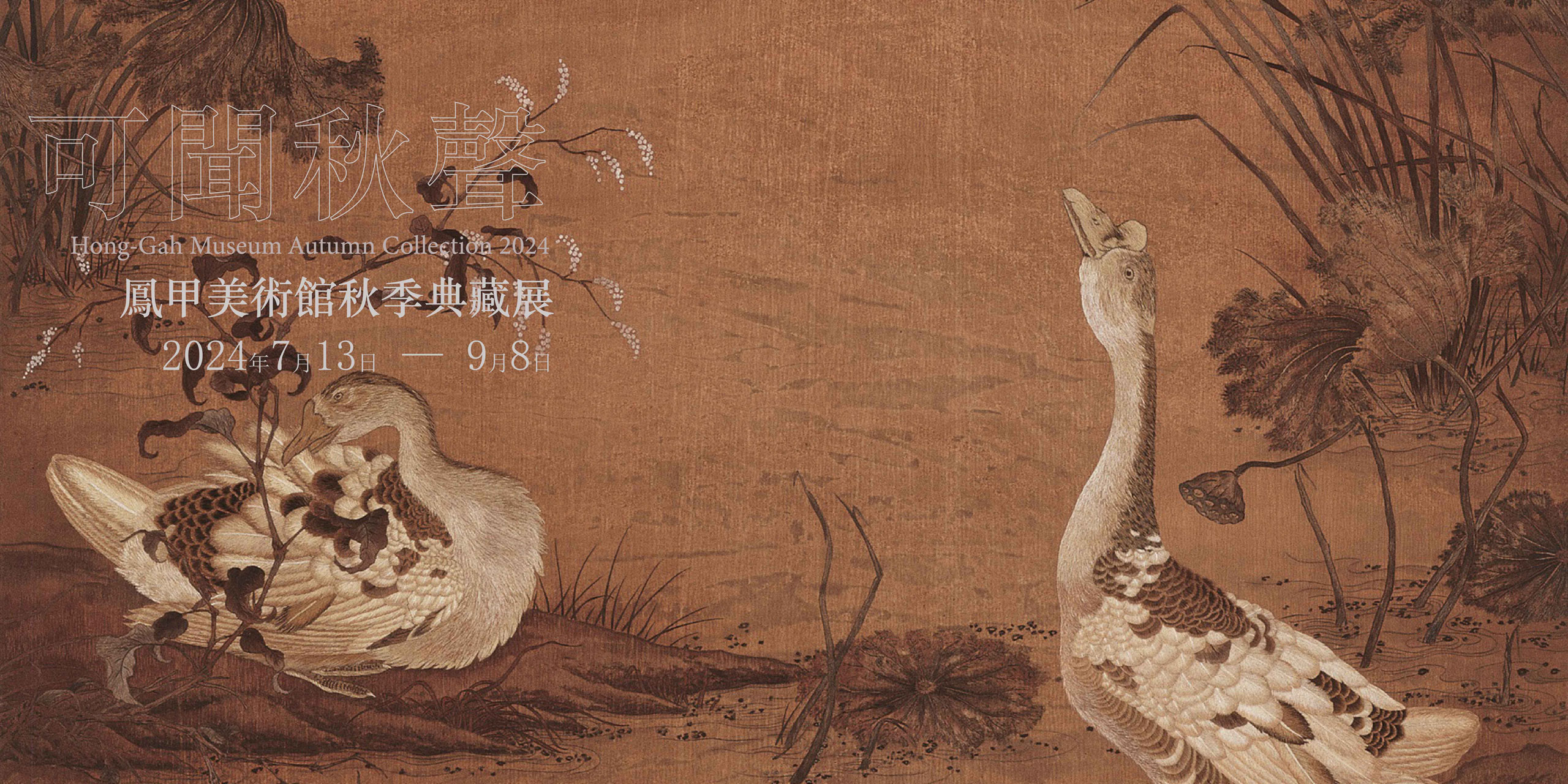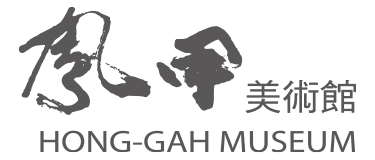BACK
Hong-Gah Museum Autumn Collection 2024

The founder of the Hong-Gah Museum, Mr. Andrew Chew, embarked on his journey of collecting art in the 1980s. After establishing Hong-Gah Museum in 1999, he has displayed his collections and regularly rotated the artworks to captivate the audience. As summer bids farewell, Hong-Gah Museum ‘s Autumn Collection Exhibition showcases a total of five exquisite embroidery works, accompanying the audience into the crisp season of autumn.
“Autumn Pond with a Pair of Geese” is an innovative replica of an ancient painting by the Chinese master, Huang Cui-feng. The remnants of lotus pods in the pond mark the onset of autumn, as the interaction of two geese brings vitality to the tranquil waters. To recreate a texture reminiscent of ancient paintings on the embroidered canvas, “antique paper” was used as the base material for naturally presenting a yellowed texture. However, unlike the softness of fabric traditionally used as the base for embroidery, the unique texture of paper generates a different tactile sensation. This technique increased the difficulty for embroiderers during the stitching process. Any oversight in adjusting the strength of the needle could easily result in pricking their fingers and bleeding, making the embroidery process more laborious. As a result, this masterpiece can be seen as an exquisite artwork exceptionally challenging to replicate.
The “Tiger Head” double-sided embroidered screen is presented in the form of a portrait, showcasing the head of a tiger. Through the piercing gaze of its eyes and the erect position of its ears on the screen, one can almost hear the echoing roars of tigers from deep valleys and mountains beyond the painting. In terms of embroidery, different stitching techniques such as plain stitch, cording, and couching were utilized to depict the tiger’s tongue and teeth. Additionally, the “pengmao stitch”(fluffy stitch) technique, derived from Xiang embroidery, was employed to vividly portray the fur and whiskers on the tiger’s face in intricate detail. This innovative technique shows the remarkable lifelike ability and creative craftsmanship of embroidery, astonishing viewers with its realism and ingenuity.
Embroiderer Zuo Jichun is a renowned master of Xiang embroidery, known for his exceptional skill. In his artwork “Moonlight Sonata in the Pine Breeze,” Zuo impeccably utilizes the intricate “pengmao stitch” technique to create a vivid double-sided embroidered screen. In this masterpiece, the majestic pine trees stand tall, blending into the misty distance. Amidst rugged rocks, a colorful fierce tiger vigilantly gazes back. Under the mountain king’s watchful protection, a scene unfolds where a mother tiger and her cub play affectionately. The mountain wind whispers gently, and the water flows softly, capturing the enchanting essence of nature and beckoning viewers into its realm of wonders.
Emperor Huizong of the Song Dynasty was a talented and versatile ruler renowned for his expertise in both calligraphy and painting, characterized by an elegant and free-spirited style. The exhibited artwork “Autumn Evening at the Pond” is a representative piece of Song Dynasty flower-and-bird painting. In this painting, the depiction of fading lotus leaves signifies the arrival of autumn. Moving from right to left, the composition includes lotus leaves, herons, and concludes with a pair of mandarin ducks. Emperor Huizong artfully juxtaposed dynamic birds amidst static plants, creating a harmonious scene of autumn evening at the pond where both motion and stillness are perfectly balanced. The embroiderer skillfully captures the essence of this scene with a combination of expressive stitching for the lotus leaves and meticulous brushwork for the birds, resulting in a remarkably lively and intricate portrayal.
Zhao Mengfu (1254-1322) was a renowned painter and calligrapher of the Yuan Dynasty. His artwork “Autumn Colors of Que and Hua Mountains” was a piece created for his friend and collector Zhou Mi, depicting the landscapes of his hometown in Shandong. It has become one of his most well-known masterpieces. The painting begins with the sharp triangular shape of Hua Bu Zhu Mountain and concludes with the rounded shape of Que Mountain. The waters between the two mountains link together to create a vast and open view, with details such as thatched cottages and fishermen clearly visible. This painting style echoes the blue and green landscapes of the Tang Dynasty and Five Dynasties period, showing the simplistic beauty of antiquity.
Dates|2024.07.13-09.08
Venue|Hong-Gah Museum




